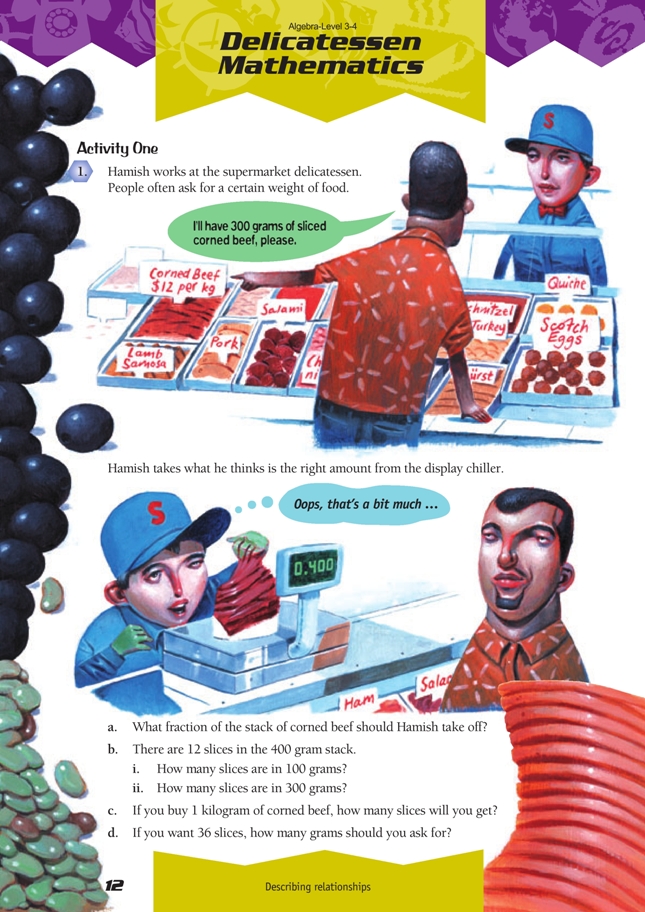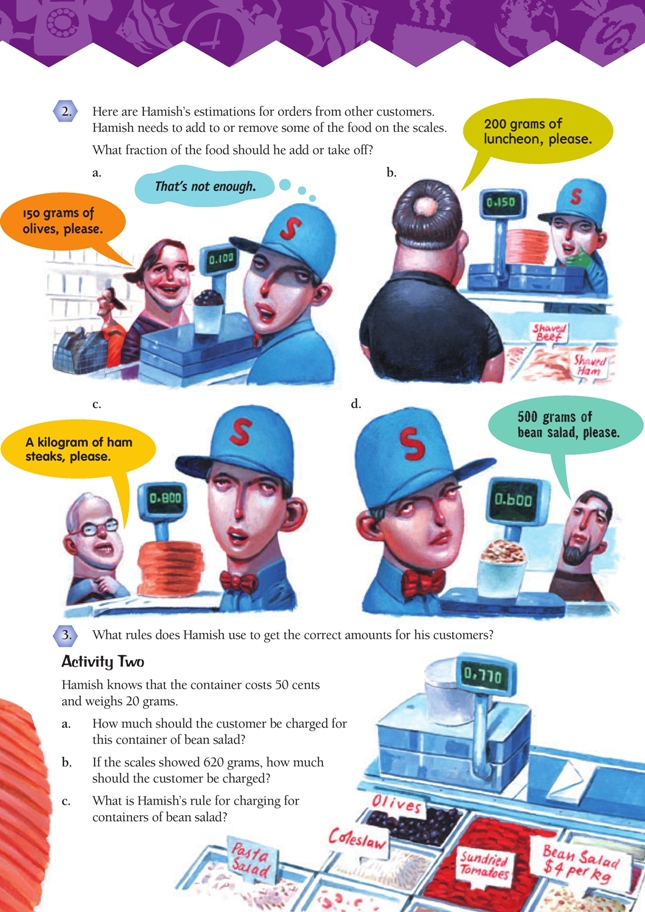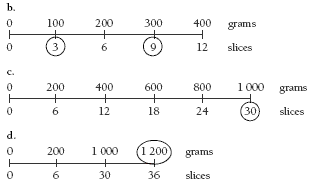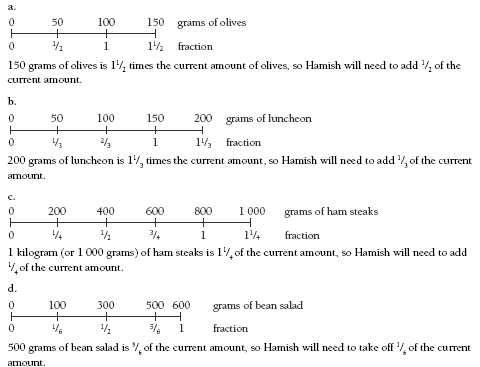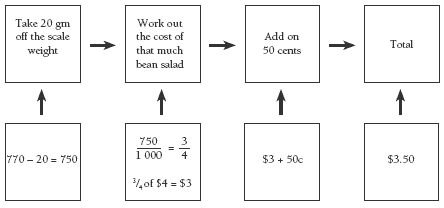This is a level 4 algebra strand activity from the Figure It Out series. It also has an achievement objective from the Level 4 Number strategies and knowledge substrand.
A PDF of the student activity is included.
Click on the image to enlarge it. Click again to close. Download PDF (524 KB)
use a table or double number line to find a linear relationship
Activity One
This activity shows the students that many people use algebra in their daily lives. The rules in this example involve ideas about proportion. At levels 3–4, the students should have developed strong mental calculation strategies with multiplication and division. These strategies are an important foundation for this activity.
Diagrams may help some students to solve Hamish’s problems. For example, consider question 1. Here is a double number line showing the situation for question 1a.
The students need to decide where 300 grams would be on the number line and therefore what fraction of the stack this corresponds to. They may use intermediate steps to do this.
So Hamish will need to remove 1/4 of the stack to leave 300 grams of meat. Similar strategies can be used with questions 1b, c, and d.
The students can use similar strategies to find the solutions for question 2, but they will need to take their reasoning a bit further to find what fraction Hamish should add or subtract.
When the students are confident using the double number line approach, you could encourage them to calculate the answers using addition and multiplication. This is a quicker method than using a number line and will help the students to see the rules that Hamish is using (which they need to do for question 3). For question 2a, ask the students:
“How many more grams of olives does Hamish need?” (50 grams)
“What fraction of 100 grams is 50 grams?” (The students might write this as 50/100
and then simplify it to 1/2, so Hamish needs to add 1/2 ).
When the students have done this several times, they should see the rule, which is to work out the difference between the weight requested and the weight on the scales and write it as a fraction of the weight on the scales, that is:
If the answer is positive, Hamish adds this fraction to the food on the scales. If the answer is negative, Hamish takes this fraction off the food on the scales. For example, for question 2d,
So Hamish takes off 1/6 of the food.
Activity Two
This problem has some added information that requires the students to organise the steps needed to solve it. A flow chart might be useful here.
Answers to Activities
Activity One
1. a. 1/4
b. i. 3
ii. 9
c. 30
d. 1 200 g (1.2 kg)
2. a. Add 1/2
b. Add 1/3
c. Add 1/4
d. Subtract 1/6
3. Answers will vary. One way is to work out the difference between the weight requested and the weight on the scales and write it as a fraction of the scale reading. For example, for question 2c,
So Hamish adds 1/4 of the food (200 g).
Activity Two
a. $3.50
b. $2.90
c. Hamish’s rule could be:
Amount on scales – 0.02 = amount of bean salad
(Amount of bean salad in kilograms x $4)
+ 50c = total cost.
